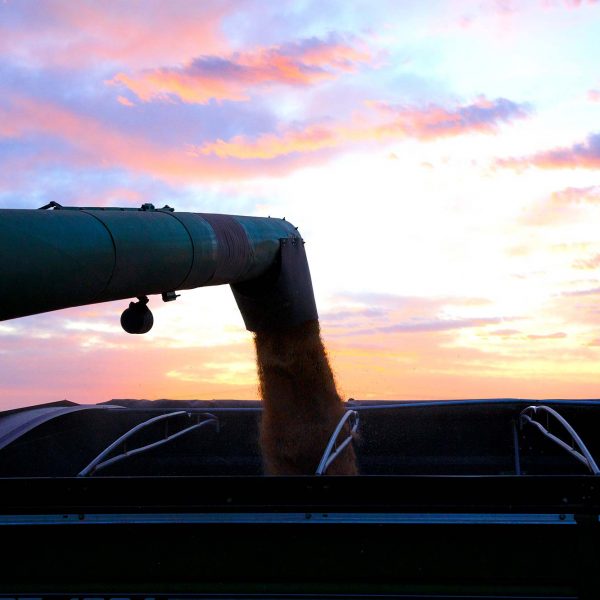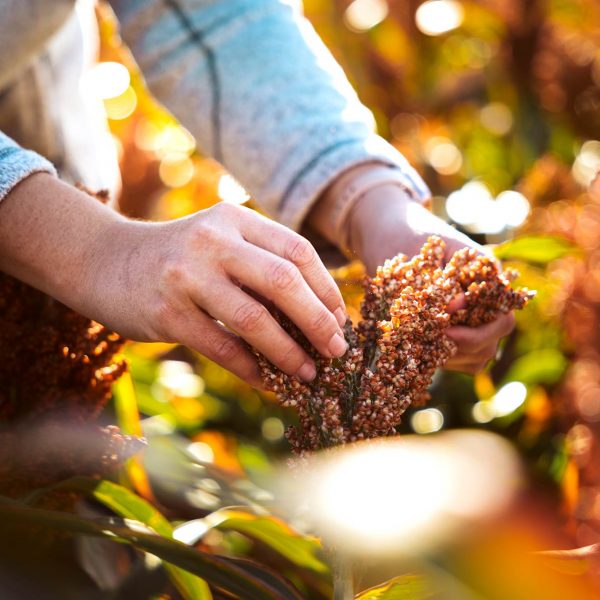Foliar Fungicide Use in Sorghum
By Sorghum Checkoff Agronomy Director Brent Bean, Ph.D.
One of the reasons sorghum is a popular crop in the central U.S. is that it has fewer foliar disease problems compared to most crops. The dry climate tends to inhibit many of the diseases that can potentially be a problem in wetter regions of the country. The foliar diseases that are of concern to U.S. growers are:
- Anthracnose (Colletortrichum sublineola)
- Leaf blight (northern corn leaf blight) (Exserohilum turcicum)
- Gray leaf spot (Cercospora sorghi)
- Zonate leaf spot (Gloeocercospora sorghi)
- Rough leaf spot (Ascochyta sorghina)
- Target leaf spot (Bipolaris sorghicola)
- Sooty stripe (Ramulispora sorghi)
- Downy mildew (Peronoscherospora sorghi)
- Leaf rust (Puccinia purpurea)
Hybrids with resistance to foliar diseases are the best way to protect against many of these diseases. Unfortunately, many seed companies do not do a adequate job of screening for these diseases or reporting the resistance level of the hybrids. Some companies will give an overall foliar disease rating, and a few will give specific ratings for anthracnose and sooty stripe.
Anthracnose is easily the most widespread of the foliar diseases in the U.S. However, it is seldom a problem in the drier production areas of the Great Plains. It can be a serious problem in the wetter regions of the Delta, Southeast and in the Mid-Atlantic States. Humid and rainy weather, along with periods of dry conditions, favor the proliferation of anthracnose. Control is best achieved with resistant hybrids.
Sooty stripe is mostly an issue in Kansas, while Downy mildew is primarily a Texas Gulf Coast problem. The other diseases listed above will be most prevalent in the wetter, humid environments of the U.S. and are only occasionally of economic importance.
Foliar fungicides are often used in other crops to promote overall health even in the absence of disease. This is also been tried in sorghum. However, in controlled studies, yield has seldom been enhanced and it is almost never economical. In 25 trials conducted from 2008 to 2017 in Texas, Kansas, Nebraska and South Carolina, only four trials had a significant yield response to fungicide. Of these four, the presence of significant foliar disease was present in three of the trials. In addition, only two had a positive economic return from fungicide application. In many of the 25 trials, researchers reported greener and healthier looking plants, but this did not translate into higher yield.
Where foliar fungicide applications may have a benefit are in those regions of the U.S. where wet, humid conditions are prevalent.
An excellent study examining the effectiveness of fungicides and their application timing was conducted in Virginia and North Carolina where eight trials were conducted in 2015, 2016 and 2017.
Sorghum yield loss associated anthracnose disease onset and severity 1.

 Hybrids with resistance to foliar diseases are the best way to protect against many of these diseases.Anthracnose Unfortunately, many seed companies do not do a adequate job of screening for these diseases or reporting the resistance level of the hybrids. Some companies will give an overall foliar disease rating, and a few will give specific ratings for anthracnose and sooty stripe.
Hybrids with resistance to foliar diseases are the best way to protect against many of these diseases.Anthracnose Unfortunately, many seed companies do not do a adequate job of screening for these diseases or reporting the resistance level of the hybrids. Some companies will give an overall foliar disease rating, and a few will give specific ratings for anthracnose and sooty stripe.
Anthracnose is easily the most widespread of the foliar diseases in the U.S. However, it is seldom a problem in the drier production areas of the Great Plains. It can be a serious problem in the wetter regions of the Delta, Southeast and in the Mid-Atlantic States. Humid and rainy weather, along with periods of dry conditions, favor the proliferation of anthracnose. Control is best achieved with resistant hybrids.
Sooty stripe is mostly an issue in Kansas, while Downy mildew is primarily a Texas Gulf Coast problem. The other diseases listed above will be most prevalent in the wetter, humid environments of the U.S. and are only occasionally of economic importance.
Foliar fungicides are often used in other crops to promote overall health even in the absence of disease. This is also been tried in sorghum. However, in controlled studies, yield has seldom been enhanced and it is almost never economical. In 25 trials conducted from 2008 to 2017 in Texas, Kansas, Nebraska and South Carolina, only four trials had a significant yield response to fungicide. Of these four, the presence of significant foliar disease was present in three of the trials. In addition, only two had a positive economic return from fungicide application. In many of the 25 trials, researchers reported greener and healthier looking plants, but this did not translate into higher yield.
Where foliar fungicide applications may have a benefit are in those regions of the U.S. where wet, humid conditions are prevalent.
An excellent study examining the effectiveness of fungicides and their application timing was conducted in Virginia and North Carolina where eight trials were conducted in 2015, 2016 and 2017.




